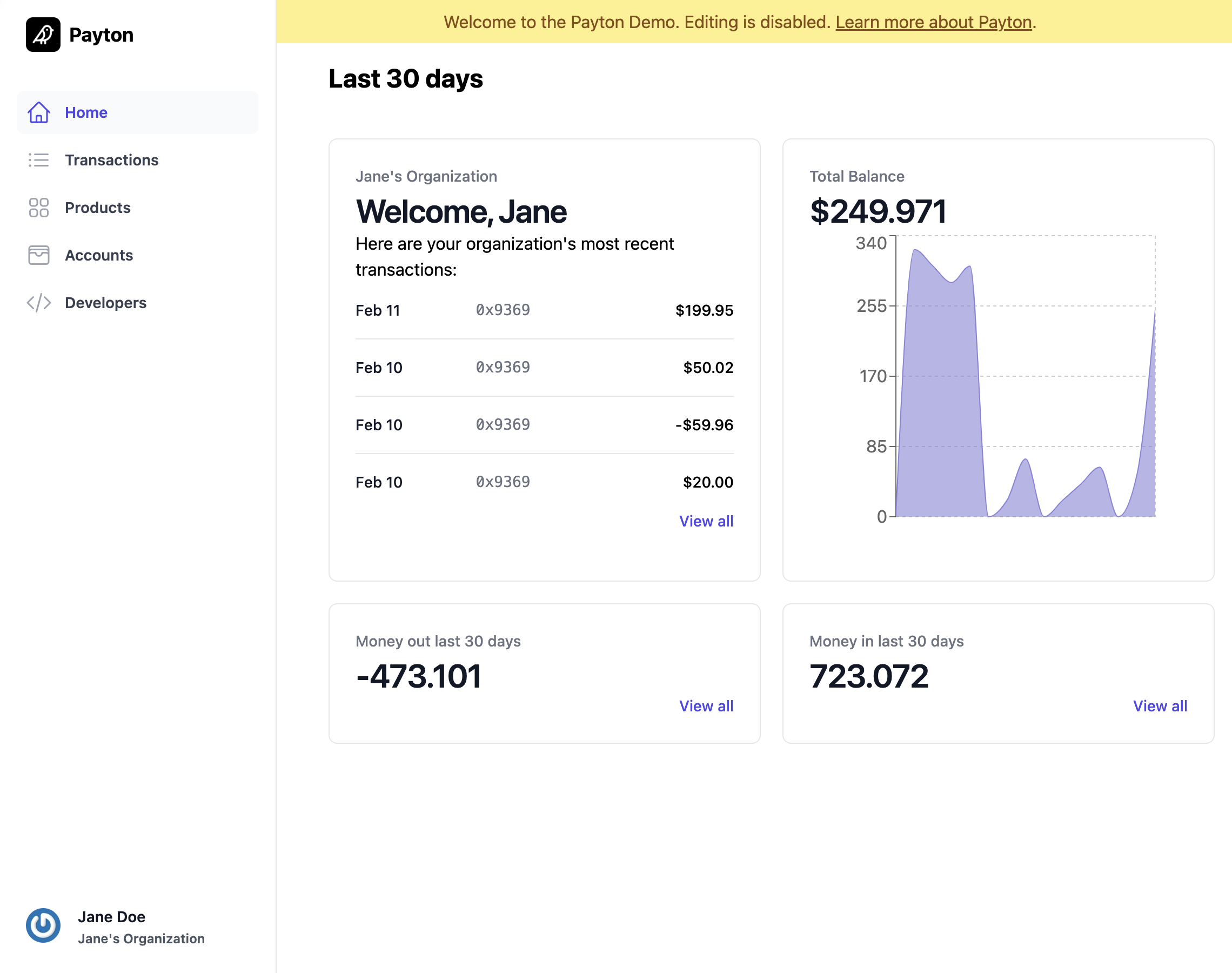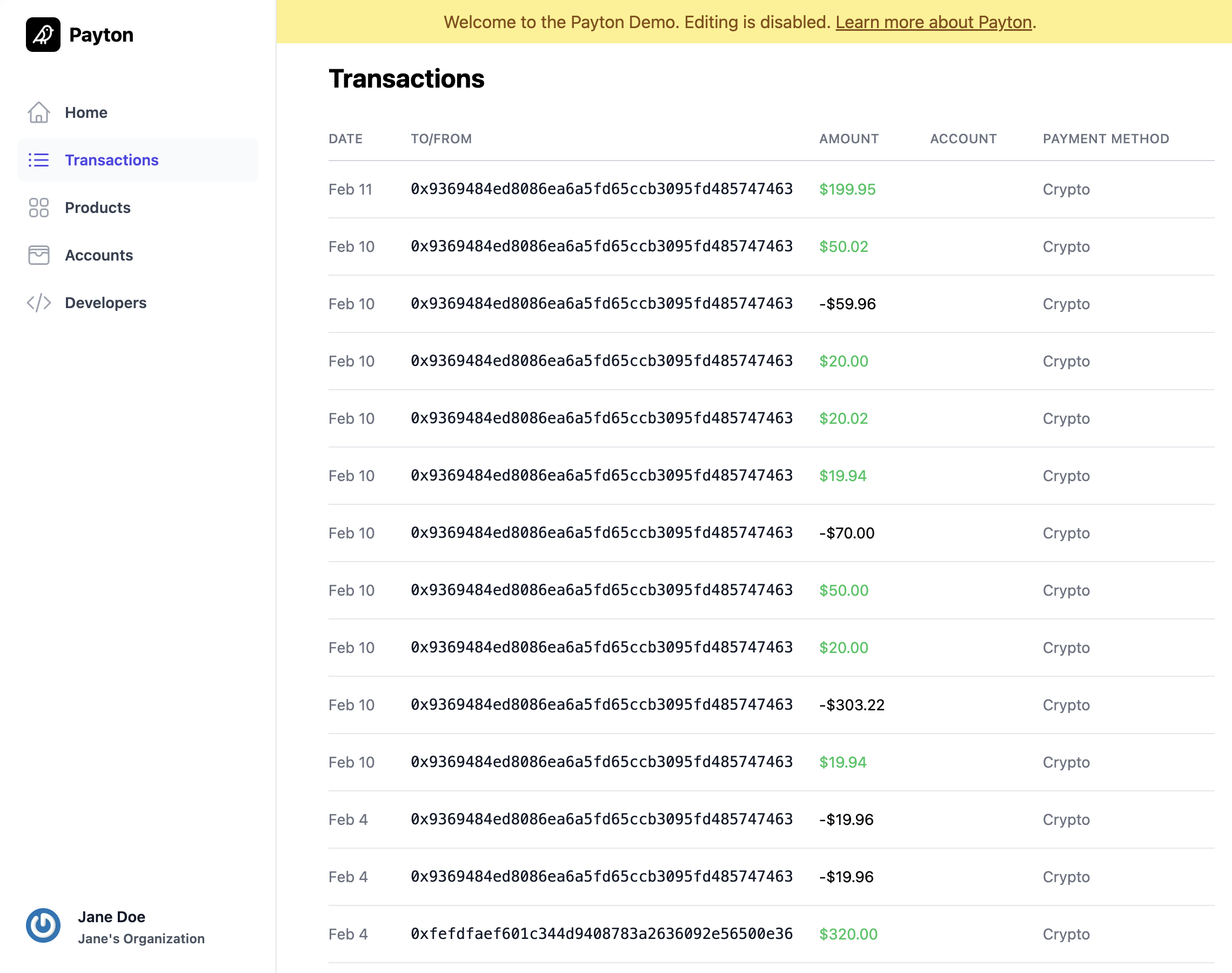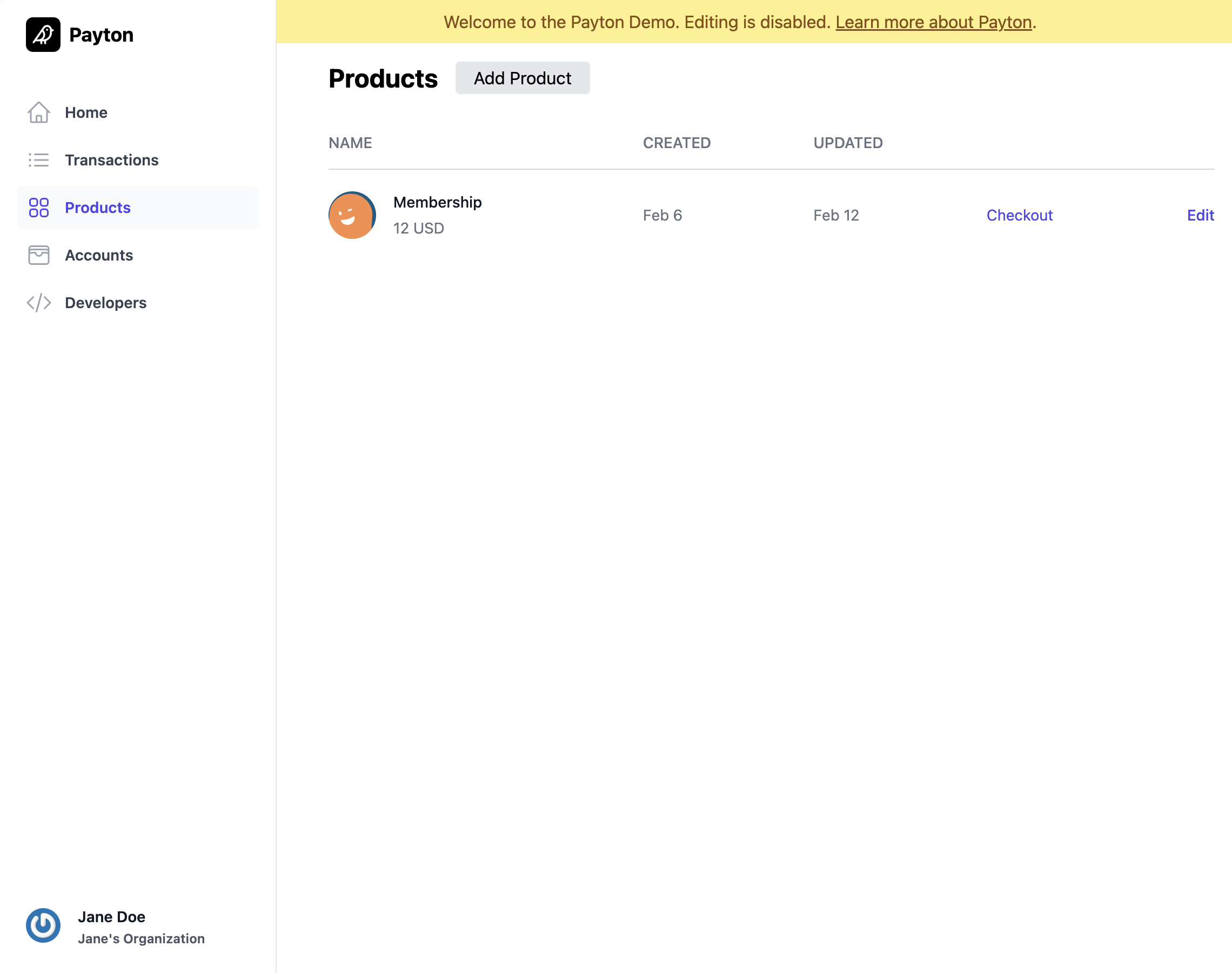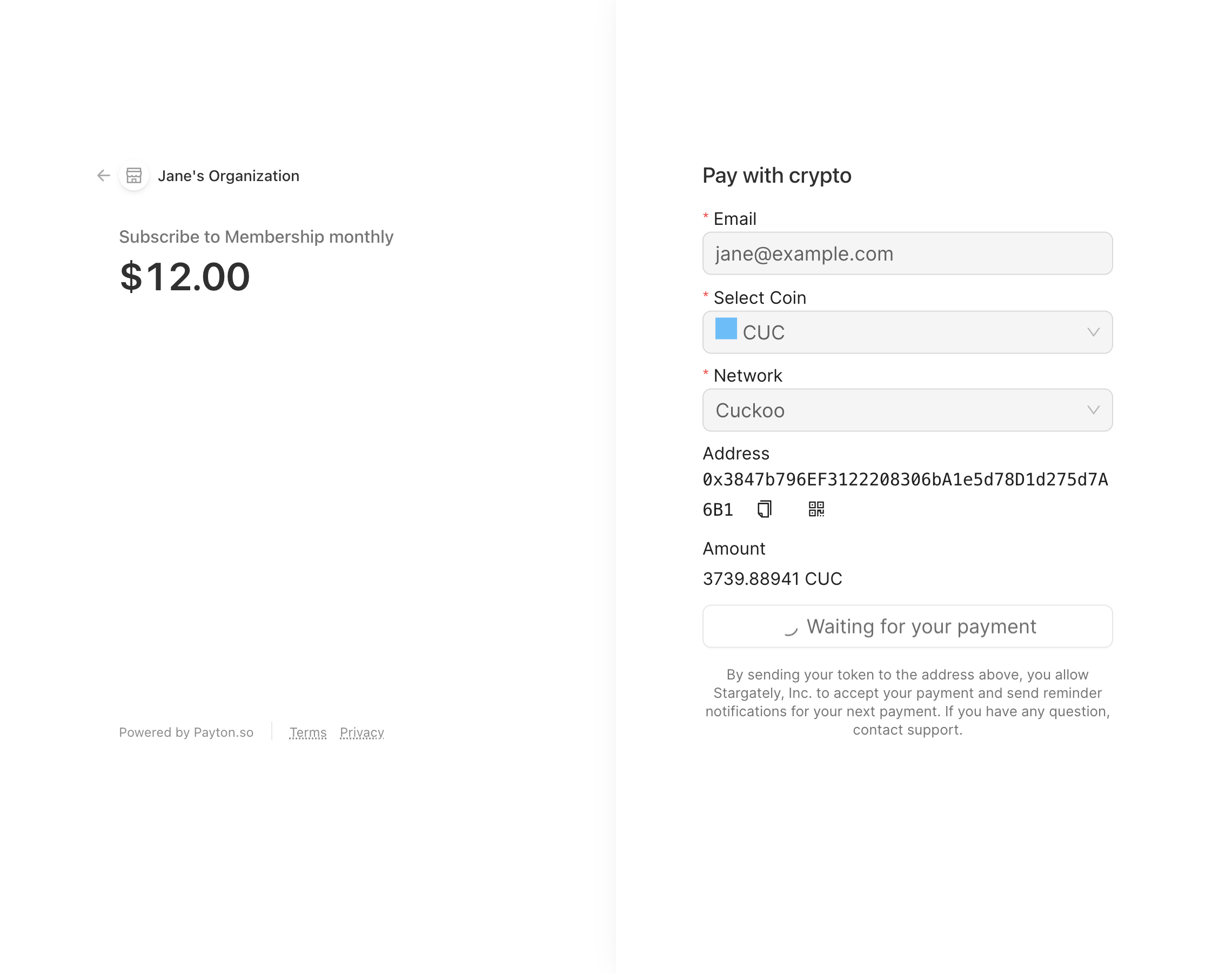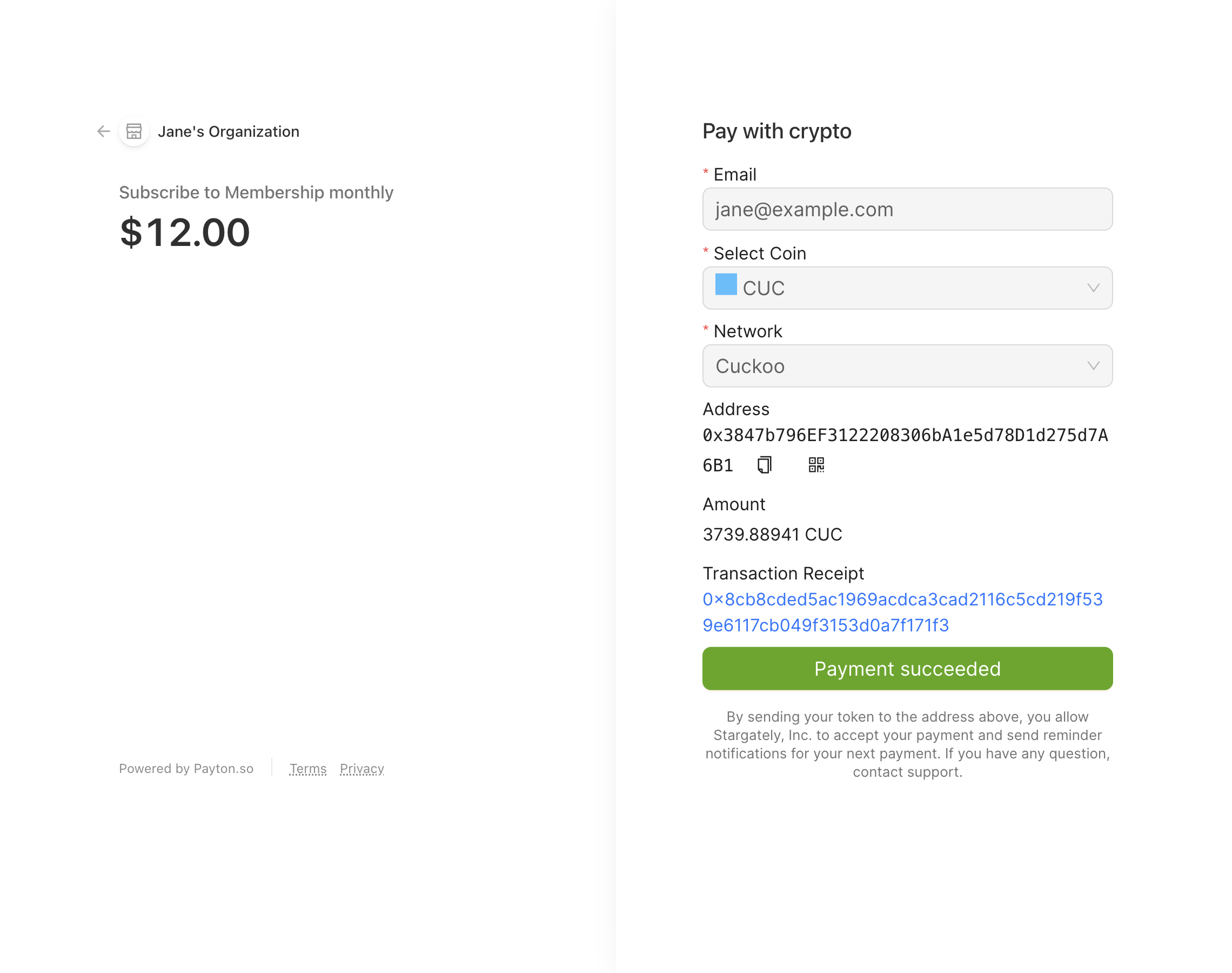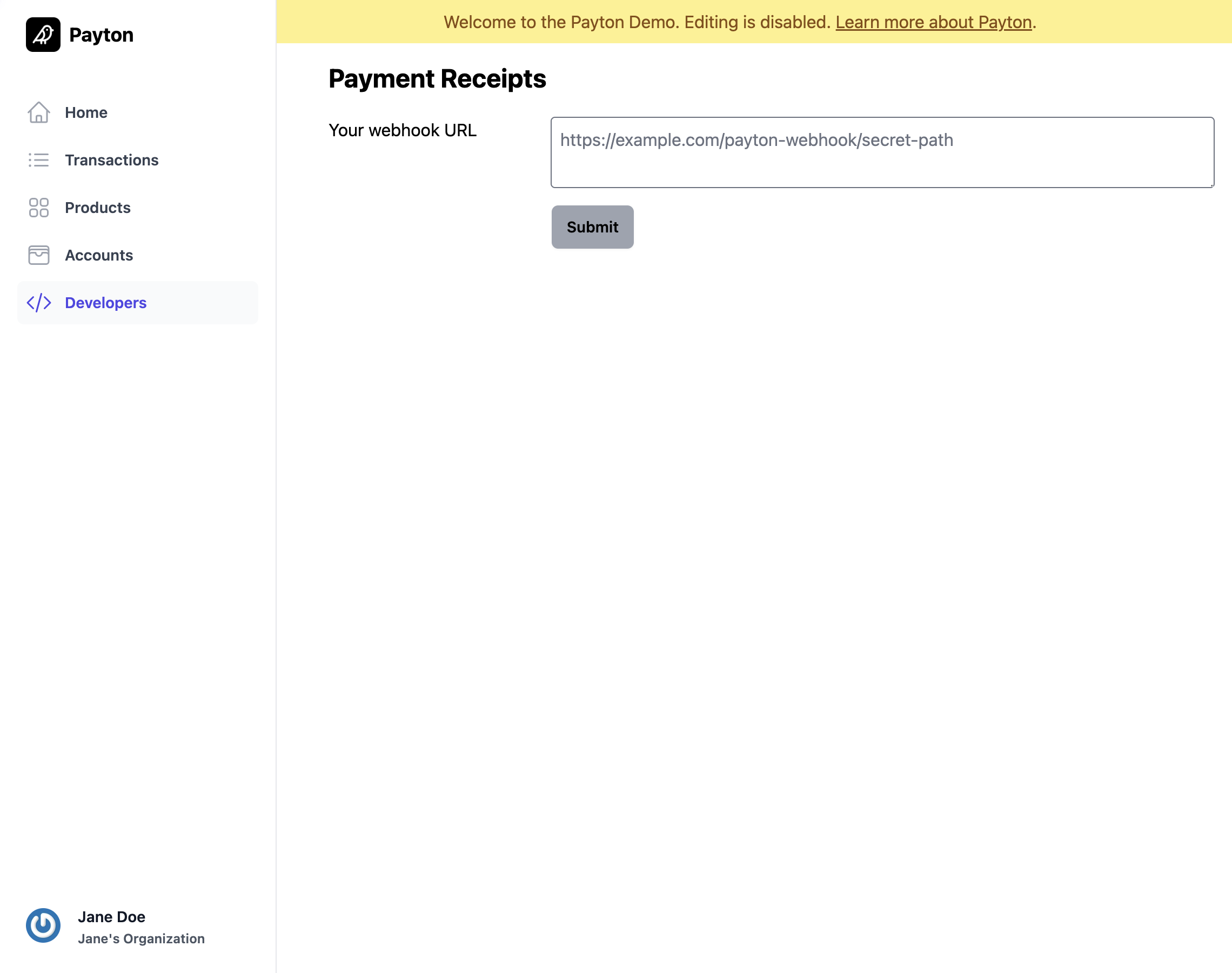Mar 8th, 2024 San Francisco. Payton is excited to work with Network3 to streamline its global payment experiences. Network3 is striving to build a dedicated AI Layer2 and its globally-scaled brandwidth-sharing service takes a global payment solution to empower the customers to pay and get paid easily.
What is Payton
Payton is a Financial OS for ambitious Web3 organizations and freelancers, featuring crypto payment checkout, payroll, payouts, expense management, and automation for freelancers and teams. Payton is built by a team powered by BlockEden.xyz - An industry leading marketplace in Move, Rust, and EVM Blockchain Web3 APIs, which is serving 6K developers, $45 million USD stakes, and 28 blockchains.
What is Network3
Network3 is an AIoT layer 2 platform focused on privacy security and efficient decentralized computing, providing confidential data transfer and computing algorithm sharing for decentralized AI. Network3 integrates an efficient anonymous certificate-less sign-cryption (CLSC) algorithm, a data correctness verification mechanism, an IP anti-tracking measure, and a decentralized reliable federated learning (FL) framework.
Network3 already has mature web2 products with millions of users per month. Network3 will leverage existing web2 traffic and bring users into their web3 innovative ecosystem. The decentralized federal learning AI model training system also generates an incentive mechanism to distribute rewards according to the participant's contribution.
How does Payton’s solution work with Network3?
Organization Setup
Payton will setup the pilot user and product registration for Network3. However, here is a quick preview of what the registration will be like -
Payin - Customers pay Network3
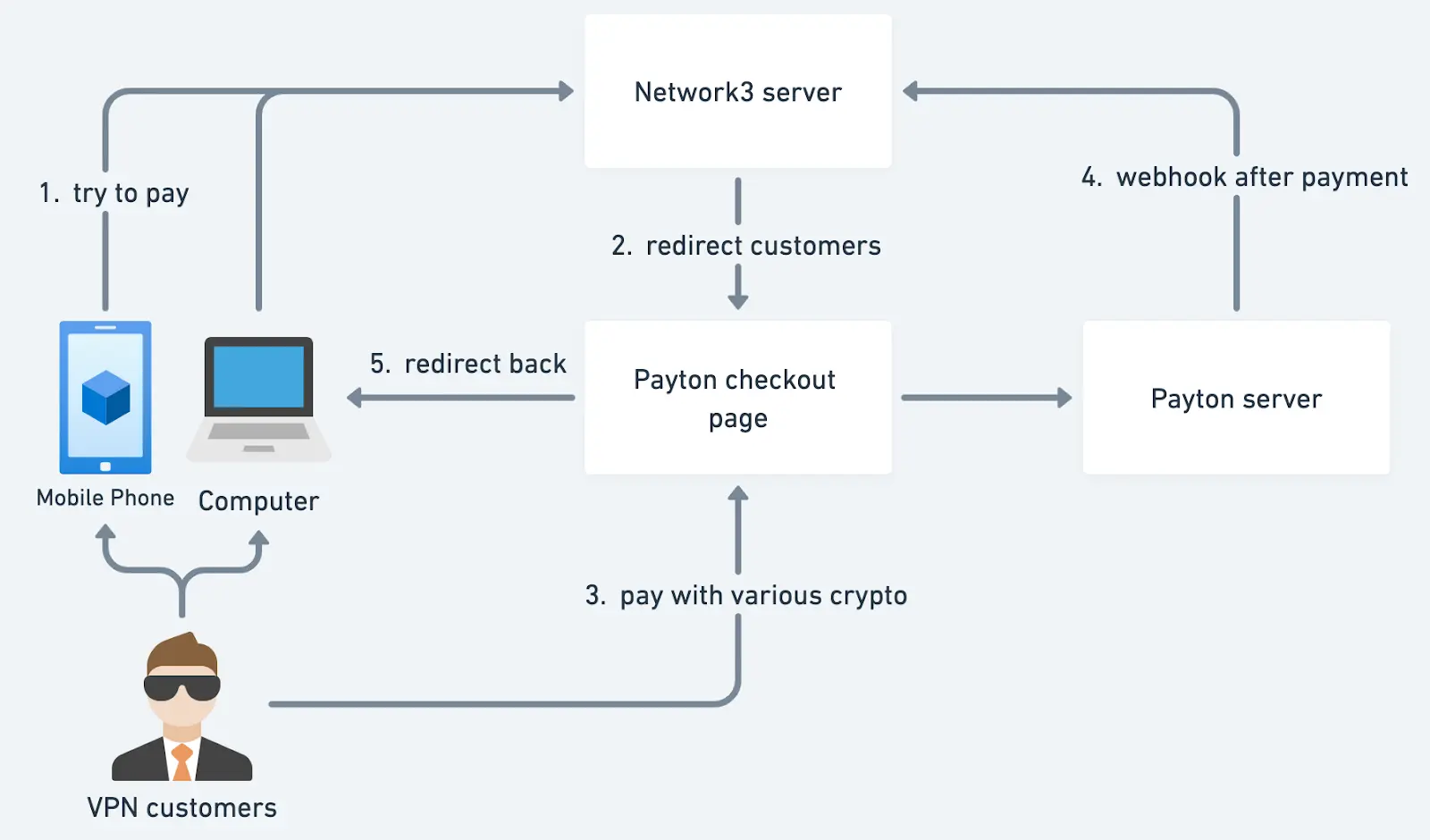
1. Try to pay: Customers using Network3 mobile or desktop app, and want to top up their accounts.
2. Redirect customers: Then the customer will be redirected to https://checkout.payton.so/[email protected]&price=price_JiGFdJ2Gxf2QUDrHyww7 according to the pricing plan they selected.
3. Pay with various crypto: Customers can pay with various tokens as long as the market value is matching the price.
4. Webhook after payment: Once payment is made successfully, Payton server will issue a receipt to the customer’s email
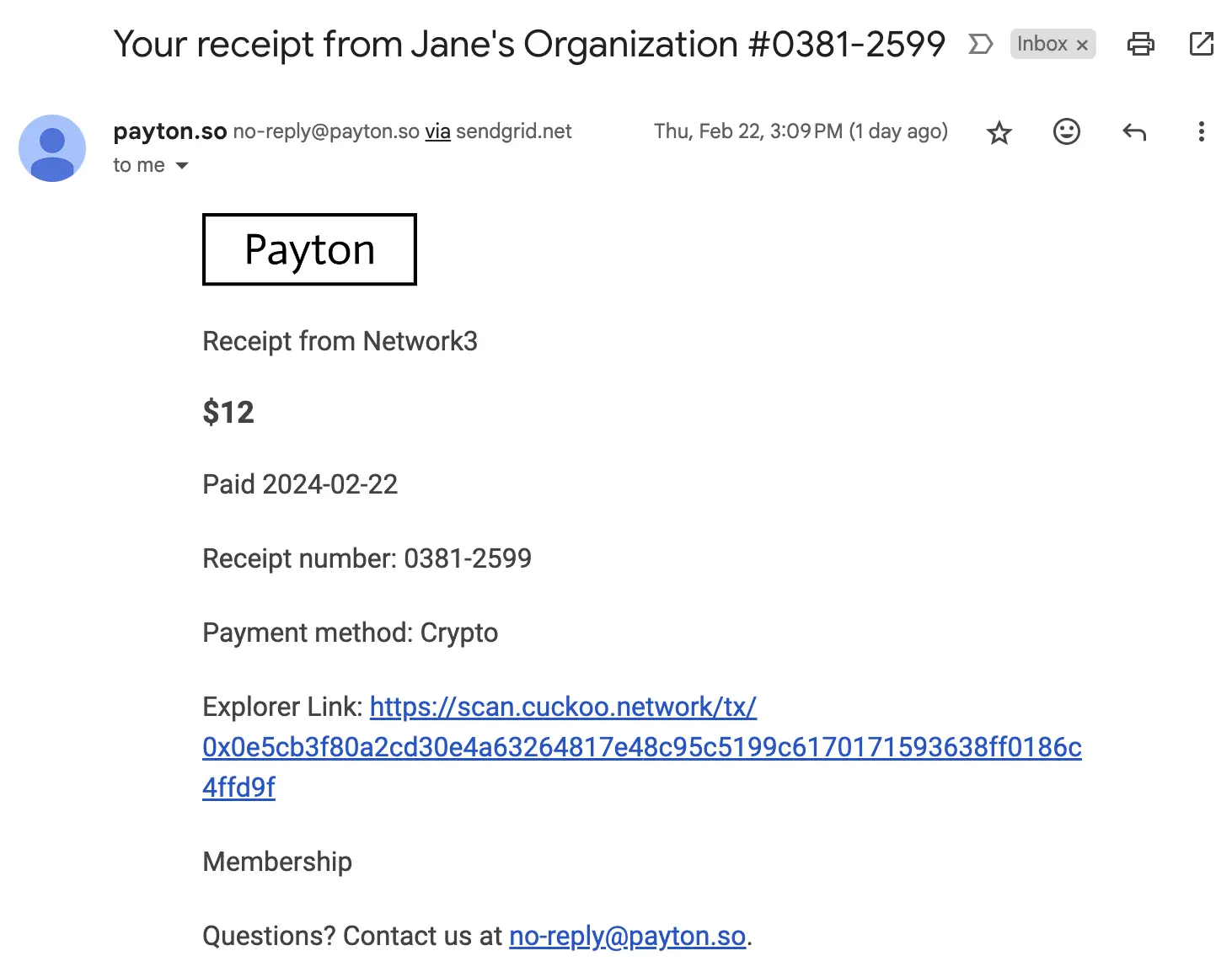
and call the Network3 server with a body of the following format:
interface IPaytonWebhook {
id: string;
type: "invoice.payment_succeeded";
data: {
customerEmail: string;
planId: string;
};
}
Then the the Network3 server can add credits to the customerEmail’s account.
5. Redirect back: Meanwhile, the customer will see a button “Payment succeeded” and clicking that button will redirect back to the pre-registered success URL.
Payout - Network3 pays VPN servers
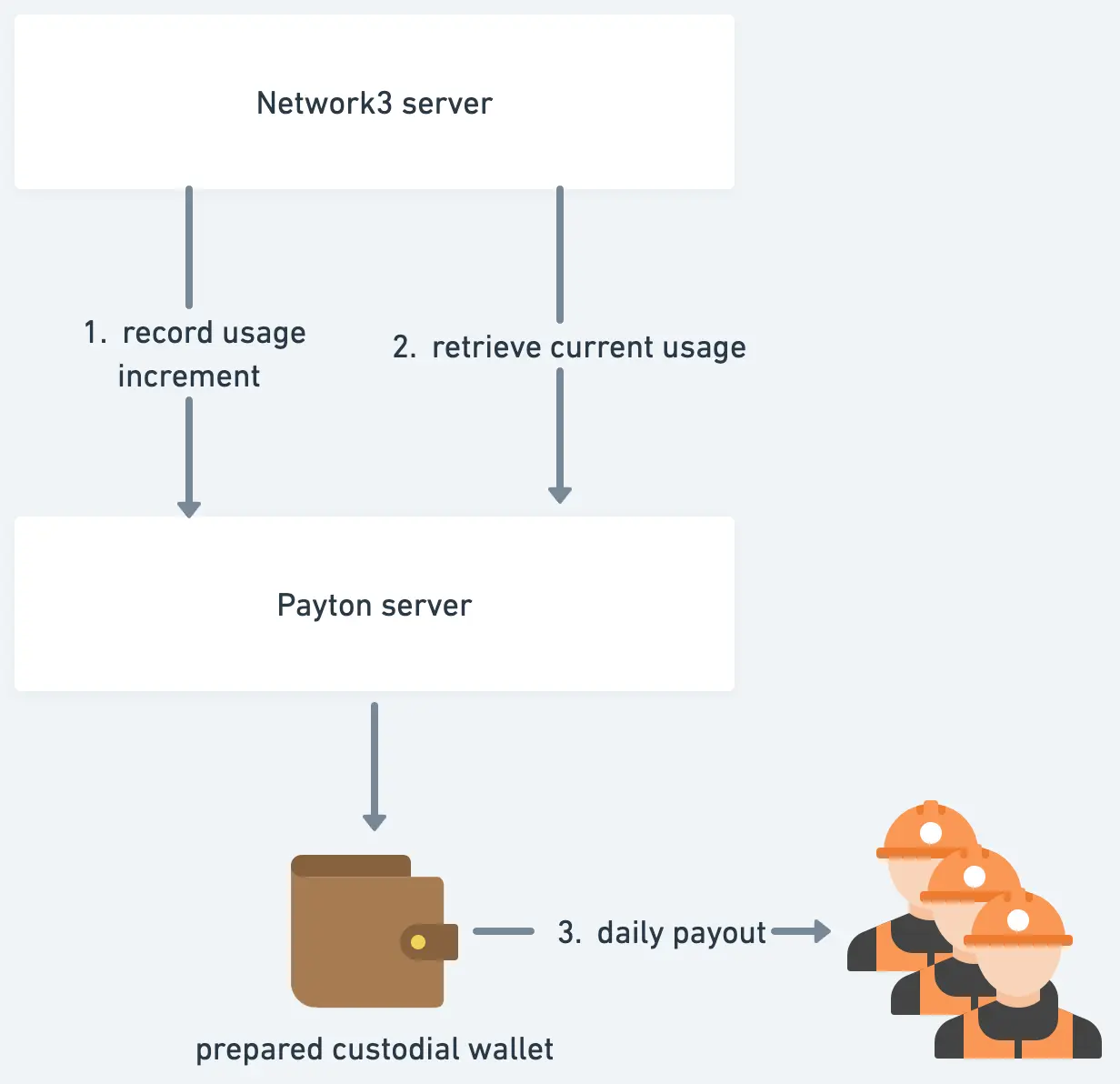
Network3 specifies what blockchain network they are using and then prepares tokens in the custodial wallet. Then
- Record usage increment with Payton server
- If needed, Network3 can fetch current usage or invoice for a certain user
Payton server will pay out according to the usage using tokens in the custodial wallet every day.
Other Integrations
Nework3 will use Payton for other corporate financial use cases as well. More integrations are coming.
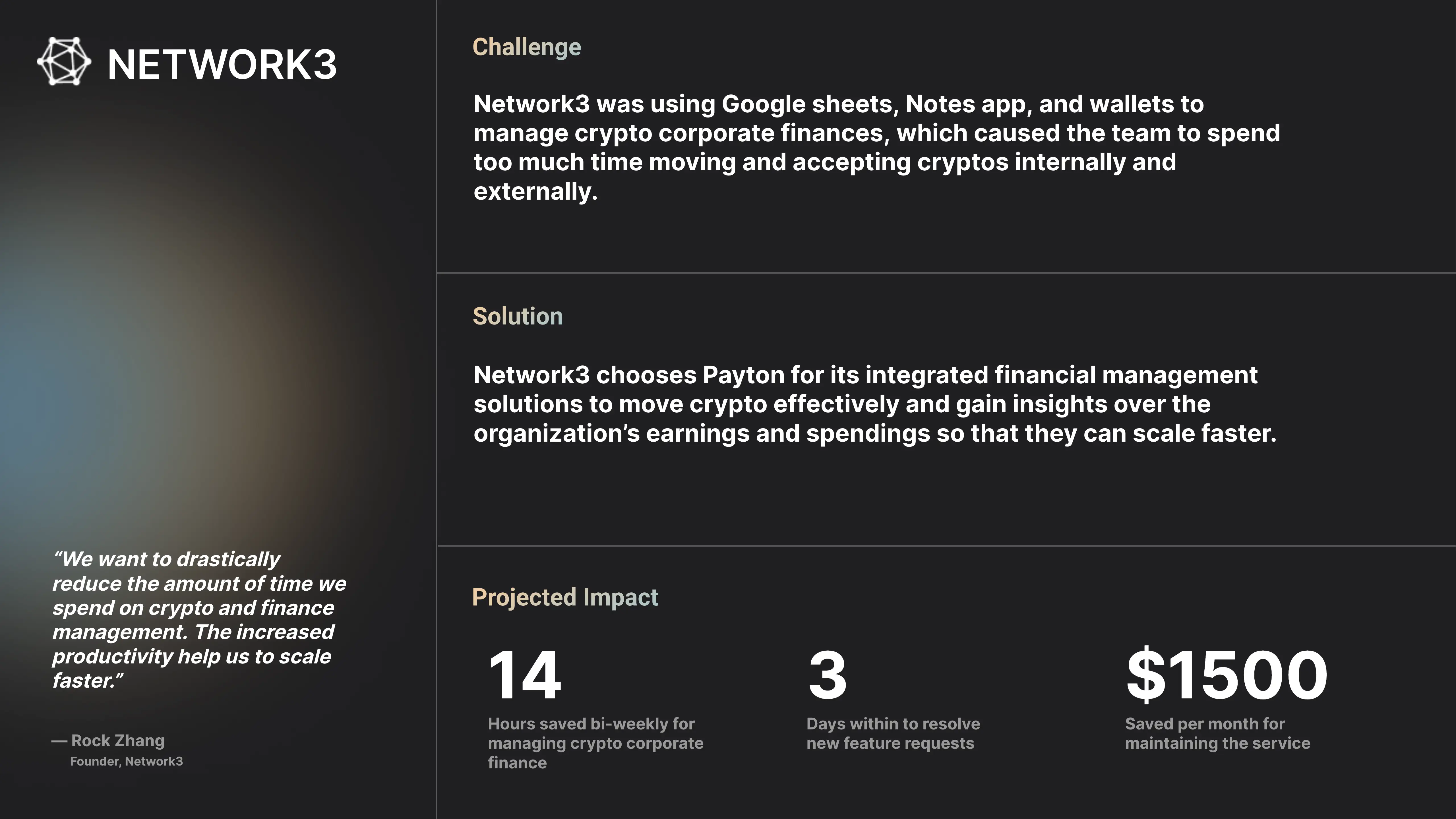
Conclusion
Payton's partnership with Network3 is a testament to the power of collaboration in the blockchain ecosystem. It underscores the transformative impact that innovative, decentralized solutions can have on global payment systems, setting a new standard for privacy, security, and user empowerment in the digital age. As the boundaries of what's possible continue to expand, the collaboration between Payton and Network3 will likely be remembered as a pioneering step towards a more interconnected and decentralized world.
